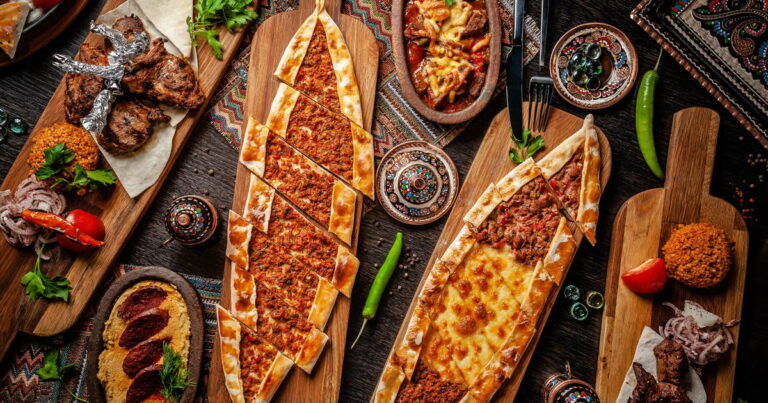Introduction to Turkish Cuisine
Turkish cuisine is famous for its diverse and rich flavors, blending influences from Central Asia to the Balkans and the Middle East. It is a fusion of Mediterranean and Middle Eastern flavors with a focus on grilled meats, fresh vegetables, and spices. The use of fresh herbs and spices such as oregano, mint, cinnamon, and cumin gives Turkish cuisine its unique taste.
History of Kebab in Turkey
The history of kebab dates back to the Ottoman Empire. It was a staple dish for the Turkish soldiers who used to skewer meat and cook it over an open flame. The dish quickly became popular among the masses and spread all over the country. Over time, kebab evolved to include different variations, each with its unique cooking method and ingredients. Today, kebab is one of the most popular dishes in Turkey, and its popularity has spread to other parts of the world.
Types of Kebab in Turkish Cuisine
Turkish cuisine is known for its various types of kebab. The most popular ones are Adana kebab, Iskender kebab, and Doner kebab. Adana kebab is made from ground lamb mixed with chili pepper and served on a skewer. Iskender kebab is a combination of lamb and beef, served with tomato sauce and yogurt. Doner kebab is made from stacked meat that is slowly cooked and sliced off the spit, served with flatbread, onion, and tomato.
Ingredients Used in Kebab
The most commonly used meat in kebab is lamb, but beef and chicken are also used. The meat is usually marinated with olive oil, garlic, and various herbs and spices, such as paprika, oregano, and cumin, to enhance its flavor. Vegetables such as onions, tomatoes, and peppers are also grilled alongside the meat to add flavor and texture.
Preparation Techniques of Kebab
The traditional method of preparing kebab is by skewering the meat and cooking it over an open flame or charcoal grill. Another method is to cook the meat in a tandoor oven, which is a clay oven used for baking bread and roasting meat. The meat is placed on skewers and cooked in the tandoor oven until it is perfectly cooked.
Cultural and Social Significance of Kebab in Turkey
Kebab has a significant cultural and social significance in Turkey. It is a popular dish served at family gatherings, weddings, and other important events. Kebab houses, or ‘kebabci,’ are a common sight in Turkey, where people go to enjoy a delicious meal with family and friends. Kebab has also become a symbol of Turkish cuisine, representing the country’s rich culinary heritage.


